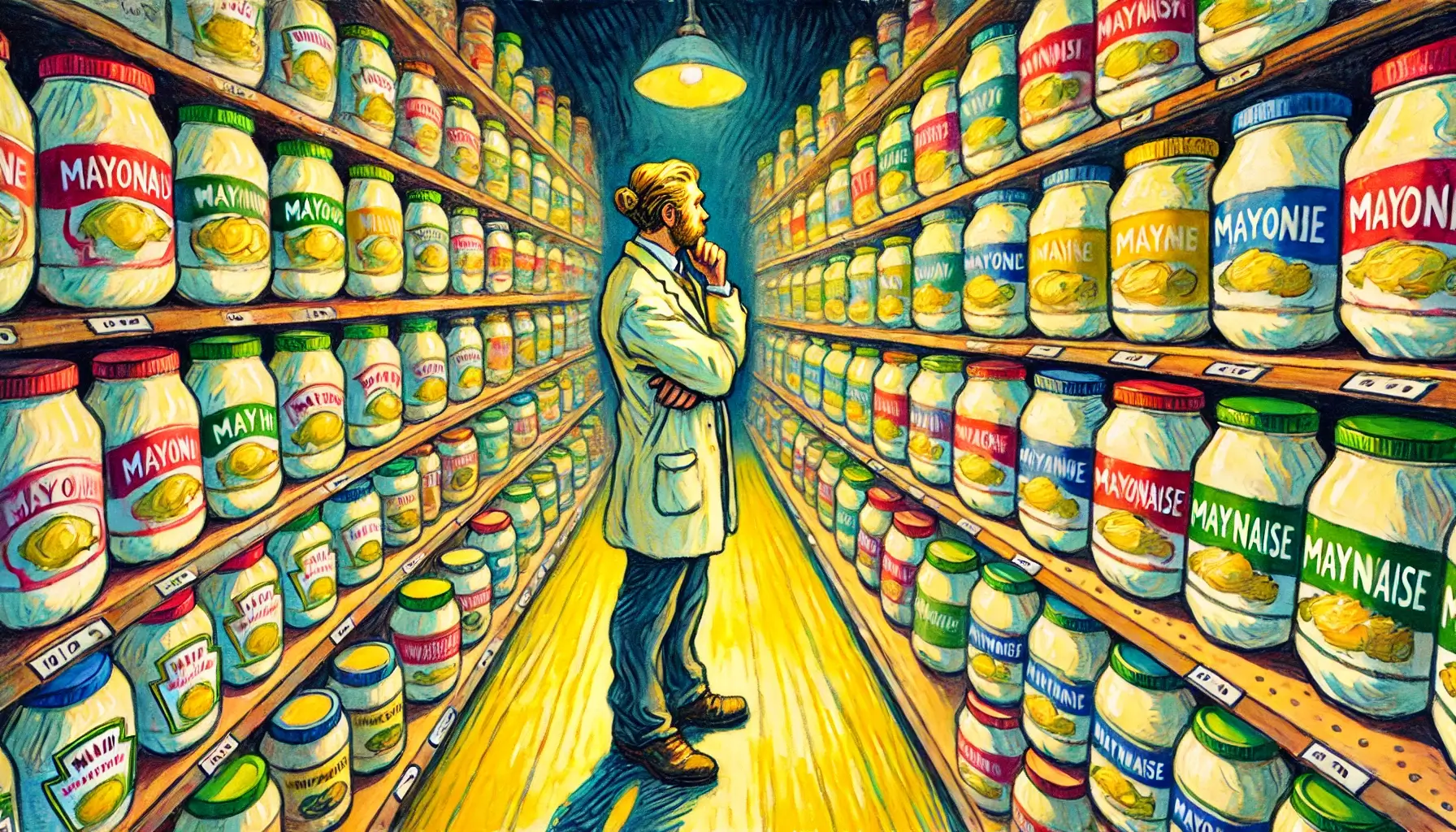“Marketing is about telling good stories. Conversion is about telling a good story to the right people.”
Bryan Eisenberg
I’ve had a complicated relationship with mayonnaise.
For years, I avoided it, convinced it was a mistake in condiment form. Maybe it was a bad childhood experience, or perhaps I’d just inherited some kind of irrational anti-mayo prejudice.
But then something happened: I actually tried it as an adult.
Not the careless dollop on a soggy sandwich, but the real deal—mayo used with intention, coaxing flavors out of otherwise ordinary foods. And suddenly, I realized… I kind of liked it.
How had I missed this for so long?
Fast forward to last week: I was at the grocery store, trying to buy mayonnaise like a normal adult. Trouble is, I’m new at this. For most of my life I avoided mayo entirely, so I never learned the difference between “with olive oil,” “made with cage-free eggs,” or “extra-smooth spread.”
To me it all sounded like marketing poetry—and I stood there, jar in hand, wondering if I was about to discover the perfect BLT companion or accidentally buy something better suited to spackling drywall.
This is the part where I’d love to say, “And then I picked a jar and went home.” But of course I didn’t. I stood there, thinking like a marketing nerd, and realized there’s even a name for this kind of mess: Conversion Rate Optimization.
Because here’s the thing: mayo has a conversion problem.
The shelves teemed with options—each shouting about “creamy goodness” or “artisan vinegar”—but none of them bothered to tell me the one thing I actually cared about: would this make my sandwich better?
That’s what CRO is supposed to do. It’s not about tricking someone into buying more mayo; it’s about giving them the bridge between “hmm, maybe” and “yep, this one.”
Clear, simple, useful.
Imagine a jar that just said: “For BLTs.” Done. I would’ve been halfway home before the guy in produce finished stacking avocados. That’s CRO.
In the end, I picked something—more out of exhaustion than conviction. And sure, I technically converted. But it wasn’t because the jar won me over; it was because staying there any longer felt like punishment.
That’s the thing about choices: without clarity, people don’t get excited—they get tired. And tired people don’t choose well. They compromise, settle, or grab the closest jar with the prettiest label. But it’s not a victory—it’s survival.
And that’s where my clarity-loving brain starts to twitch.
Because that’s what bad marketing does: it turns what could be a “heck yes” into a reluctant “fine.” And reluctant buyers don’t tell their friends, rave about your product, or come back for seconds. They just scrape mayo onto their sandwiches and wonder if they should’ve gone with the other jar.
Which, when you stop to think about it, is an unfair amount of pressure to put on mayonnaise. Mayo should be the quiet hero of a BLT, not the subject of buyer’s remorse.
And your product—whatever it is—deserves better too.
That’s what CRO is really about. Not trickery. Not manipulation. Just clarity. The kind that lets someone pick up a jar, nod with confidence, and say, “Behold, the chosen mayo.”
And if that isn’t marketing wisdom, at least it’s lunch.






